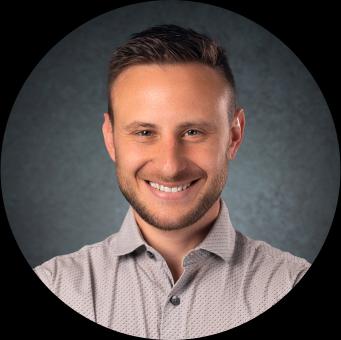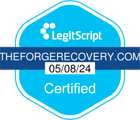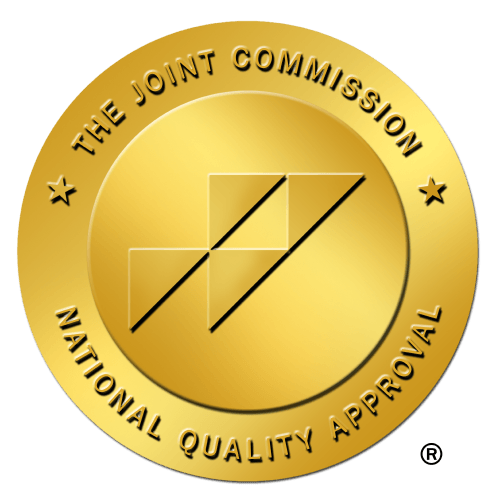Opioid Addiction 101: How to Recognize & What to Do


Opioid addiction can have serious consequences, and it is important to recognize and understand this condition. Learn why in our blog!
The opioid epidemic is growing rapidly.
According to the CDC, the number of opioid overdose deaths has quadrupled since 1991, and over 70% of the drug-related deaths in 2019 involved an opioid. Every day, approximately 130 people die of an opioid overdose. The fact that many newborns are born with opioid withdrawal symptoms is an undeniable tragedy.
It is no surprise that opioid addiction is a national public health crisis. More and more treatment centers are making opioid treatment a top priority.
Are Opiates and Opioids the Same?
No. Opiates are a category of alkaloid substances that act on the central nervous system to produce pain-relieving effects. Opioids are a subset of opiates that have been made from synthetic sources.
There are three types of opiates:
Opiates
Natural opiates are derived from plants like the poppy plant. Yet, being derived from a natural source does not mean a substance is safe or healthy. Many natural substances can seriously affect the body, including addiction and even death. For example, morphine, codeine, and opium are all natural opiates and potentially harmful and addictive substances.
Semisynthetic Opioids
Semisynthetic opioids are derived from natural opiates, but their formulation has been altered in labs. This includes heroin, a Schedule I drug, which is made from morphine. Other semisynthetic opioids include hydromorphone, hydrocodone, and oxycodone.
Like opiates, semi-synthetic opioids can be highly addictive.
Fully Synthetic Opioids
Fully synthetic opioids lack natural opioids. Examples of fully synthetic opioids are fentanyl, methadone, and tramadol.
Fentanyl can be appropriately used in certain medical settings, but it can also be abused. The fentanyl epidemic is growing as it gets manufactured in homemade labs and winds up on the streets. It is potentially 50 times stronger than heroin and is often added to other street drugs as a cost-saving measure. This means people may be taking fentanyl without realizing it.
Whether taken by itself in pure form, cut form, or when combined with other drugs or alcohol, fentanyl overdose can occur. This can slow the heart rate to a dangerous level and makes the heart struggle to function properly.
According to the CDC, synthetic opioid-involved death rates increased by over 56% from 2019 to 2020.
Avoiding Opioid Addiction
Although opioids have pain-relieving benefits when used under careful medical supervision, even taking prescription opioids can lead to dependence and addiction. People need to be careful to not take prescribed opioids longer than necessary, and they should bring any concerns about their prescription to their doctor.
People that have been prescribed opioids for chronic pain or other long-term conditions are at an increased risk of opioid addiction because the longer people use opioids, the more the body can become dependent on them.
Besides the management of chronic pain, people may be prescribed opioids for:
Toothaches and dental procedures
Injuries
Surgeries
Chronic pain
Severe coughs
If an individual has not been prescribed opioids, they should not use them.
Recognizing Opioid Addiction
Abuse of opioids is extremely dangerous. It puts people at a very high risk of addiction. Opioids release chemicals that trigger a “feel good” reaction that incentivizes the brain to want more. As the body adjusts and builds tolerance to the substance, the individual will need to use more to feel the same effects.
The signs of opioid addiction are physical, emotional, behavioral, and psychological. The hallmark of addiction is not being able to stop using. More times than not, family and close friends can usually see there is an addiction problem before the patient does.
Other signs of addiction include:
Recreational/Occupational Signs
Losing interest in activities that once gave joy
Exhibiting a lack of motivation
Attending work or school on an erratic schedule
Abandoning responsibilities
Missing important appointments
Getting fired or being unable to stay employed
Physical Signs
Neglecting hygiene routines
Eating noticeably more or less than usual
Sleeping at odd hours
Cognitive/Emotional Signs
Feeling fatigued or sad
Being overly energetic, talking fast, and saying things that do not make sense
Exhibiting nervousness and agitation
Experiencing increased anxiety
Having dramatic mood swings
Being irritable or cranky
Engaging in poor decision-making
Getting into trouble with the law
Social Signs
Changing friends
Avoiding family and former close friends
Spending more time alone
Lying about their whereabouts or activities
Getting emotional whenever someone voices a concern about their behavior
What Can I Do to Help?
Individuals should learn the above signs. If they notice a loved one exhibiting many of them, it may be time to open dialogue. For example, if a person has a good relationship with the loved one, they can have a discussion but allow them to do the talking. They can open by saying something like, “I’ve noticed you haven't been yourself lately. Is there anything you’d like to talk about?”
It is important to learn how to use Naloxone. (The brand name is Narcan.) It is carried by police and EMTs and is now available to the public. This life-saving nasal spray can be found over the counter and is becoming more available in certain states.
Individuals can find numerous videos on how to administer Naloxone or get a simple certification. It reverses the effects of an opioid overdose with just a few pumps of nasal spray. Although, individuals still need to call 911 after they administer the spray.
Safeguard opioids even if they are prescribed. Have a family member administer them as directed by a physician. There are also less potent pain killers if the patient is recovering from a dental or surgical procedure.
Most importantly, if there are any concerns, individuals can reach out for help from professionals in a medical practice or treatment center.
The Forge Recovery Center Provides Expert Treatment for Opioid Addiction
Opioid addiction and dependence can affect anyone. It does not discriminate against race, age, or economic background. It’s an equal opportunity killer, and once you learn what signs to look for, the next step is getting help. If you or someone you love is abusing opioids, reach out to The Forge Recovery Center today.
At The Forge, we realize addiction never stops changing, and we constantly curate and adapt our programs to meet those challenges head-on. In fact, we customize each treatment plan to fit the patient’s needs. There’s no such thing as a “one size fits all” solution. We offer evidence-based treatments and therapies from world-class clinicians and medical staff. We also offer long-term outpatient programs.
Reach out today to learn more about our effective and personalized treatment. To learn more about our programs, please contact The Forge Recovery Center today.
Are You Struggling with Mental Health or Addiction?
We Can Help. Call Us Now!
CALL: 877-839-1772





